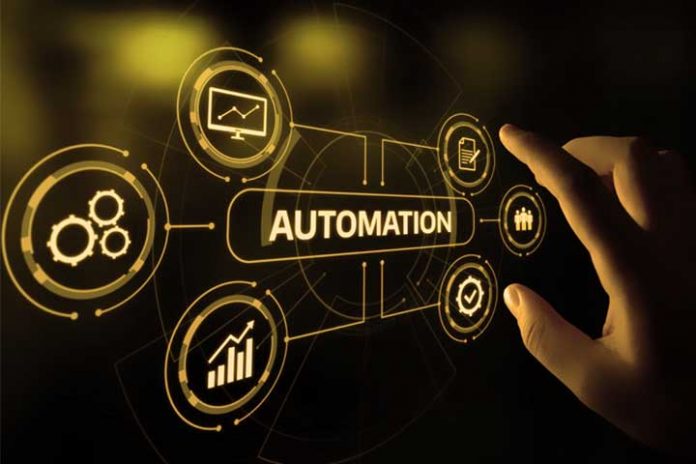The growth of industry 4.0 is already unstoppable. More and more companies are joining automation and new technological advances as a symbol of productivity development.
And there are already many applications and techniques used in factories.
So today we show you the 10 key automation trends in 2021
Artificial intelligence
Although it seems like futuristic technology, artificial intelligence is a solution that is increasingly used by companies.
It is a technology that combines algorithms with the purpose of introducing the same capabilities of human beings into machines.
IBM and Siemens, among others, have already inserted artificial intelligence into their industrial processes.
Blockchain
It is a key element in the industry, especially in processes involving several companies because it acts as a database and a backup with as many users as needed. Everyone sees all the information pertaining to each block.
There are no intermediaries in your transactions.
This gives it transparency and reliability since your system and the information it contains cannot be hacked.
As its name suggests, it acts as a chain of blocks. Each block is connected to its predecessor block and contains unique numbers (hashes). Any alteration of this code information is reported to all users and, if there were any errors, that block would be automatically removed from the chain.
Blockchain is talked about as the next great revolution.
Robotics
The evolution of Industry 4.0 has caused many technological tools to improve as well. Thus, robots have optimized their functions. Factories no longer have only isolated machines that help them in production processes, but now it is collaborative robots that have gained strength in the sector. Currently, we observe operators and robots working together to optimize production processes, in quality and in costs. Without a doubt, it is a whole revolution.
Virtual reality
Virtual reality is a widely used resource today. It is of great help in factories as it allows you to digitally simulate a product and interact with it.
Augmented reality
Although the terms virtual reality and augmented reality are sometimes confused, the truth is that they have quite a few differences. AR alters the real world and adds to it, through a platform, elements that seem real. Regarding the industry, its main benefit is that it allows you to project digital products and provide the necessary visual information in a real setting. Unlike virtual reality, which offers a totally fictional environment.
Cybersecurity
2020 has been considered the year of privacy par excellence with the new data protection law for users. The same is true in industry. The importance of protecting data in companies is growing. For this reason, industrial cybersecurity is becoming a basic issue in companies. It is essential that this aspect is taken into account since the volume of information with which companies work and its sensitive nature is very high.
Digital twin
A digital twin is the digital representation of an entity or a system. That is a virtual model that we feed with sensors from the physical model. It is the union between the virtual world and the physical world.
The digital twin provides the necessary information that is needed for industrial processes. Data and intelligence are used to understand how a product or service works and to draw conclusions that allow optimizing the business and predicting situations.
Clouds & Analytics
This system allows connecting data from machines to the cloud. The immediate and analytical access it offers enables manufacturers to perform predictive maintenance.
All the information that is generated is organized and classified in an easy way so that it is available through the web.
Using cloud-based software can be useful for many things, especially when it comes to payments. For example, payments can be made using an automated digital invoice payment workflow like YoozPay.
Time-sensitive networking
The machines are connected. With the arrival of the IoT, more and more data is being sent from one place to another.
This offers many advantages in the industrial setting:
Real-time communication
It allows knowing instantly what is happening in the production process. Through an easy and intelligible language by people all over the world. All this translates into a greater speed of action and reaction.
Interoperations between providers
In such a changing technological world, Time-Sensitive Networking is a perfect tool to adapt to new developments that arise. One of the main advantages is that the providers can be connected to each other.
Adaptability
It allows companies to be informed in real-time of the news that is taking place. This helps adaptation to take place quickly and decisions can be made instantly.
Global digitization
The incorporation of automatic processes in companies is a growing resource. The collective awareness that industrialization has reached all sectors is now a tangible reality. This application gives them greater competitiveness and advantages in their production processes.
They have greater optimization of resources, lower costs, etc. And all this translates into greater productivity.
Digitization provides an improved image of the company towards the customer and allows it to be analyzed in a more exhaustive way.
All this tells us that there is no going back in the fourth industrial revolution. And the important thing is that this globalization has already reached, to a greater or lesser extent, all companies.


